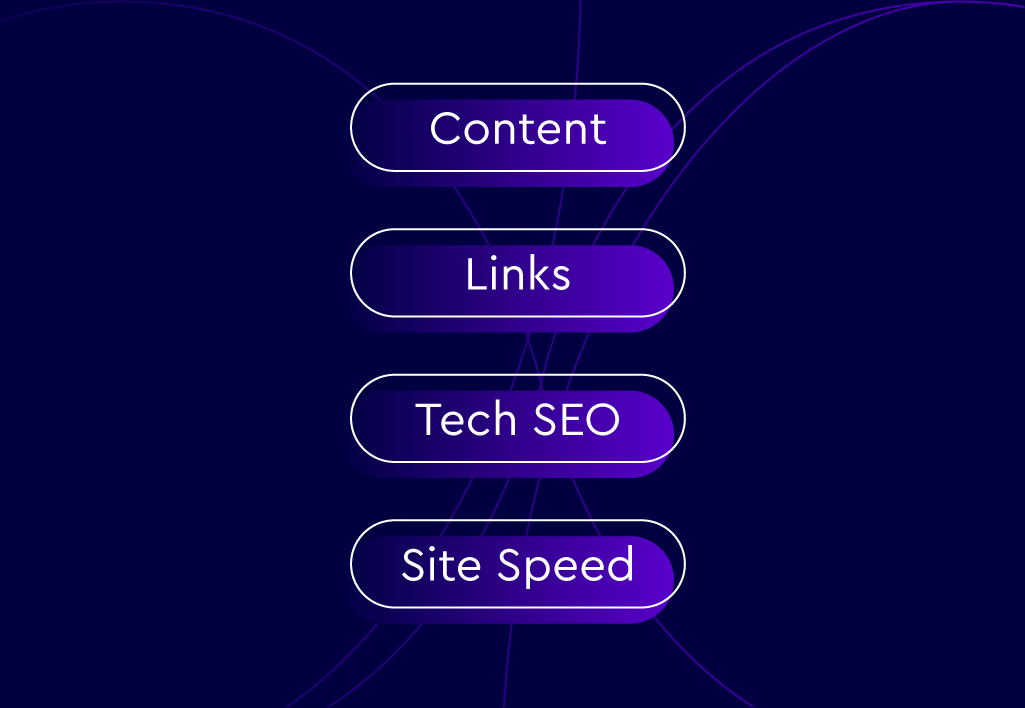Understanding Long-Form Content
There’s a good chance your website doesn’t have enough long-form content on it.
It might sound harsh, but it’s likely true, and if it is, you’re going to want to think about adding more of it to your business’s site in the coming months if you want to improve your presence on search engines such as Google.
Whether it’s the opportunity to become a trusted voice in your industry, be the go-to resource for your target audience or encourage users to purchase from your e-commerce website, the benefits of long-form pieces are endless.
On this page, we’re going to further discuss and explain why this feature should be the jewel in your marketing strategies crown. We’ll explain what it is, why audiences love it, how to do it, and speak to our experts about why they love long-form content writing.
If you want to discuss this topic over the phone or want to know more about how it can benefit your specific business, get in touch! Speak to us at 0161 327 2635 or email info@embryo.com.
Our Team of Content Writers Understands Long-Form Content.
Speak to them today to discover how they can help your business.

"From the very start, Embryo understood our goals, and their campaigns have exceeded our expectations. We're delighted to work with the team and look forward to furthering our success in 2023.”
What is Long Form Content and Why is it so Important?
Let’s start by defining the phrase that this page is all about.
A typical long-form content piece is something, often a blog, guide, or article that exceeds a word of 1,000. This figure is relatively subjective and there is no scientific exact word count but the general consensus is that longer-form content can be classified as such if the word count is between 1000-2000+ words. There is of course long-form video content but for the purposes of this page, we’re just going to focus on the written word.
Typically, longer work will go into a topic, or even a sub-topic, in great detail with the aim of educating a reader.
Long-form content creation comes in many forms, from ebooks and whitepapers to guides and pillar pages on a website. They all, however, have one thing in common, and that is length.
Audiences have questions and inquiries about almost everything, including the topic or industry in which you operate. Work which has depth and insight has a higher likelihood of answering those questions. In an SEO context, this translates to more search engine rankings for a greater variety of relevant terms that can attract local search engine users or international visitors.
So, why is it necessary?
Having extensively worded pieces on your website is necessary because you’re operating in a congested SEO market, be it one that is local to you or one that is international, involving multiple foreign competitors. Daily, millions of new pieces get uploaded and indexed and doing, for example, long-form blogs is an effective way of standing out, meeting multiple intents behind a search query, and creating a link architecture that shows Google et al your site has context and is experienced in its field.
It’s necessary also because of something called E-E-A-T, an acronym standing for Expertise, Experience, Authority, and Trust. This concept was created by Google and forms a foundational part of their organic search engine ranking factors. They have explicitly said that they will reward work that demonstrates a combination of those factors, with an explicit emphasis on ‘Trust’.
With that in mind then, it’s clear how longer pieces of work, those whose word counts go into the thousands will be able to demonstrate E-E-A-T more than those who just write a standard 500-word piece.
Internal Links and Long Pieces of Work, a Match Made in Heaven
We touched briefly then on link architecture but it’s worth spending some time discussing how a content strategy involving longer pieces of work can drastically improve your website’s performance thanks to the opportunities it provides regarding internal links.
Think of a website as a series of circles, each page representing a circle, internal links are the bonds that connect these pages together. These bonds help give your website something essential in SEO – context. As Google indexes (a more technical word for reading) your work, it scans your words and the links that are included in your work.
If done well, and there are plenty of tools that can help you do it well, Google will understand how page X relates to page Y and page Z and see that your website as a whole is a place full of expert insight about a specific topic.
This technical aspect of SEO is going to ensure that your work is as effective as possible when it is set live.
Further to this, internal linking should be done with something called ‘Link Shingling’ in mind, a term that we explore on pages 40-41 of our fantastic SEO A-Z, a 55-page guide written by James Welch, our Chief Innovation Officer.
Here’s what he had to say about link shingling (to read the full A-Z, head here to get your free download): “When linking to pages within your site, I strongly advocate using something that I call ‘link shingling’. When linking to a page from multiple others, you should ensure the anchor text is different (whilst still relevant) each time. This will help Google to understand the target page more, as well as the site as a whole.”
Proper link shingling provides crawlers (the bots that scan through content) with an even wider scope of context about your content. By writing more, and creating longer pieces of work, you can add more context, more links, and more opportunities to go deep on a topic, thus proving to Google you have the A in E-E-A-T, authority.
Array
(
[section_id] =>
[margin_top] =>
[margin_bottom] =>
[padding_top] =>
[padding_bottom] =>
[enable_form_cta] => 1
[enable_image_full_height] =>
)
Long-Form Content or No? How to Know If You Should Write Thousands of Words
We love writing a beautiful piece of content that is two, three, or even four thousand words long. However, it’s important to ask questions about the content you’re going to write even before you put a metaphorical pen to paper.
Sometimes there are instances where longer-form content isn’t the most appropriate type of writing and if done wrong, or in the wrong setting, you can run the risk of decreasing conversion rates, overwhelming people with information, or leaving them scrolling endlessly to find the right answer.
It’s all about deploying content that matches the intent of the user’s search query. If the query has higher buyer intent (i.e. Nike Air Force One’s white size 9) the chances of them wanting a history of that product is slim, meaning 2,000 words may not lead that person to convert.
Below are three questions you may well want to ask yourself before you start committing time and effort to impart your wisdom. These three questions are used by our content marketing team here at Embryo before they write for clients’ websites.
What Is the Reader After from Their Search?
This first question goes back to that all-important intent. What does the user want as a result of searching for a topic? If they’re looking for the age of a particular celebrity, or want to know when a particular public holiday is in their country the chances are that they aren’t looking for a topical deep dive into the history of that celebrity or public holiday.
They want an immediate answer, quickly. Google knows this, which is why it has, in the past few years, ramped up its ‘Zero Click Searches’ so that users never even have to click on a page to get a short, sharp answer and move on with their day.
However, some other phrases and search terms are more nuanced and offer clues as to what users want to know. These are the terms that can be met with effective, structured long-form content.
Example case study
Let’s take a client of ours that operates in the vaping and e-cigarette industry as an example. To educate and build trust our content marketers created long-form blogs targeting long-tail keywords such as ‘vaping for beginners’ and ‘how many cigarettes in a vape’ (those which didn’t have high buying intent but were informational in nature and typed by people who were looking for in-depth answers) which then linked back to the relevant product pages – where thousands of words wouldn’t be appropriate.
The result of this was a 250% increase in keywords ranking in positions 1-3 (87 to 305) and a 1,142% increase in engaged sessions (16,726 to 207,847).
As you can see, when you target key phrases that are being searched by people who want to read a comprehensive blog or article and are unfamiliar yet interested in a topic, the effects are enormous.

Is Your Topic Layered and Nuanced?
Is what you’re writing about a topic that is layered, multi-dimensional, and something that elicits multiple opinions? If so, just writing a blog post that’s a few hundred words long may not be the most appropriate approach to satisfying the user’s intent, this will likely see them immediately exit your page and visit a competitor’s.
Going deep on an intricate topic allows you to explore it in full which is most likely what users are after.
Let’s take that vape client as an example again. Our team wrote ‘Vaping for Beginners: Your Ultimate Guide’ to target key phrases such as ‘best vapes for beginners’ which is a term that is nuanced, subjective in some ways, and one that requires depth and insight.
This need was reflected in the word count which clocked in at 3,103 words.

Are Larger Pieces of Content Ranking in the Top Ten?
Before you go ahead and write two and a half thousand words, look around you and assess what the competition is doing. Visit the top ten websites that rank for a search term you’re targeting and get an average word count from them, this will give you a great idea of how much time and effort you should be putting into a piece of work.
We were very interested in working out how much content you’d need, on average, to rank on page one for a given term. So in 2021, we analysed over 24,000 phrases and found that to rank position one, page one for a term page should contain 2,855 words.
While it’s important to stress that there are instances where longer pieces of work aren’t appropriate, it’s interesting that our expansive word count study, the biggest since a now-defunct agency carried out a similar experiment in 2012, yielded this figure.
Assessing the SERP landscape for each phrase you want to rank for will give you a mix of short-form and long-form content to create for your website.
Array
(
[section_id] =>
[margin_top] =>
[margin_bottom] =>
[padding_top] =>
[padding_bottom] =>
[enable_form_cta] => 1
[enable_image_full_height] =>
)
Done Well, Effective Long-Form Content Can Be A Game Changer
As we’ve detailed both in theory and with examples, where it can be used effectively, longer-form pieces of work, be they blogs, articles or guides, can be incredibly effective.
At Embryo, we have spent many years writing pages for businesses up and down the country, from our home in Manchester. To learn more contact us today by phone on 0161 327 2635 or email us at info@embryo.com.

"From the very start, Embryo understood our goals, and their campaigns have exceeded our expectations. We're delighted to work with the team and look forward to furthering our success in 2023.”


